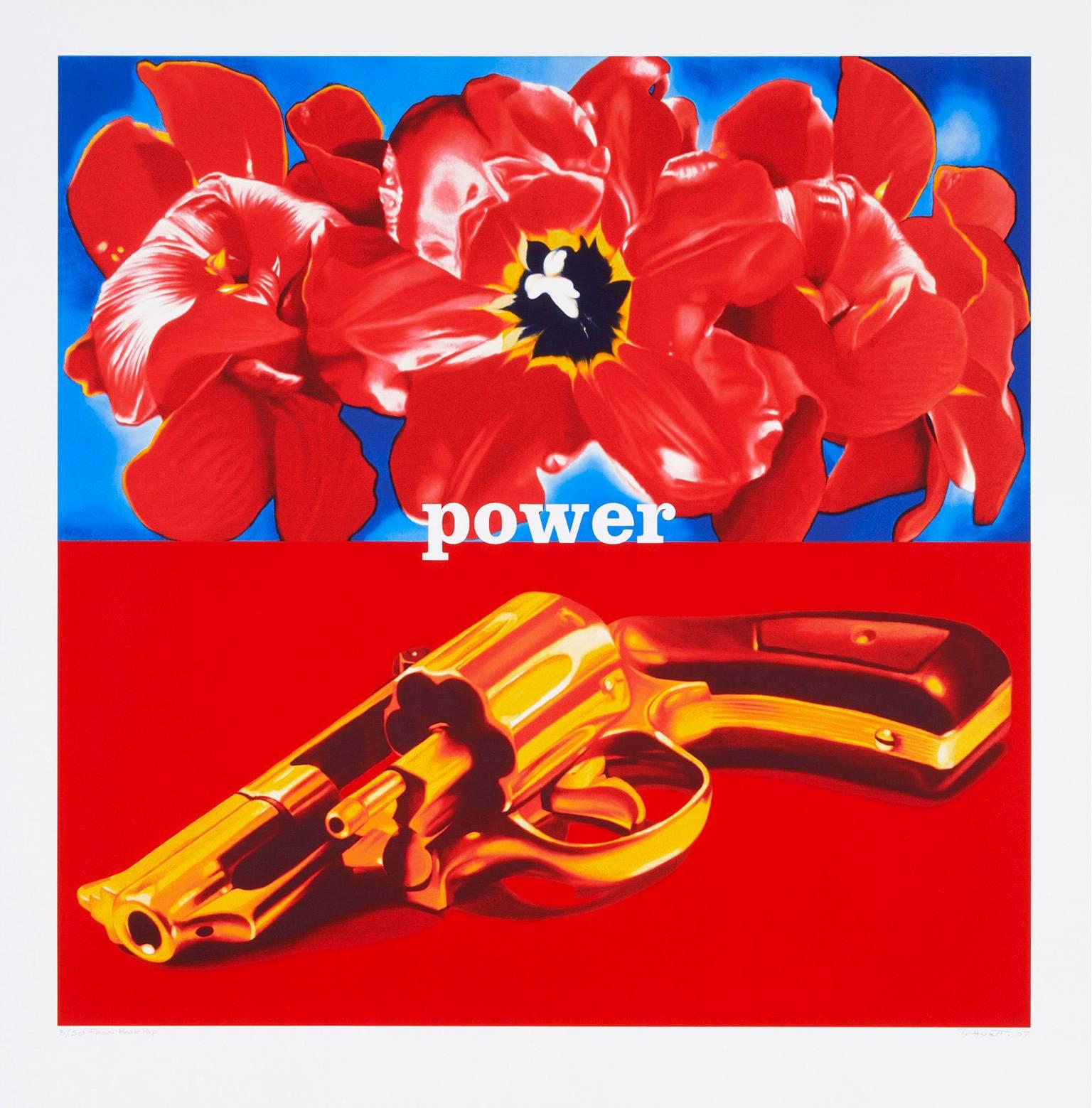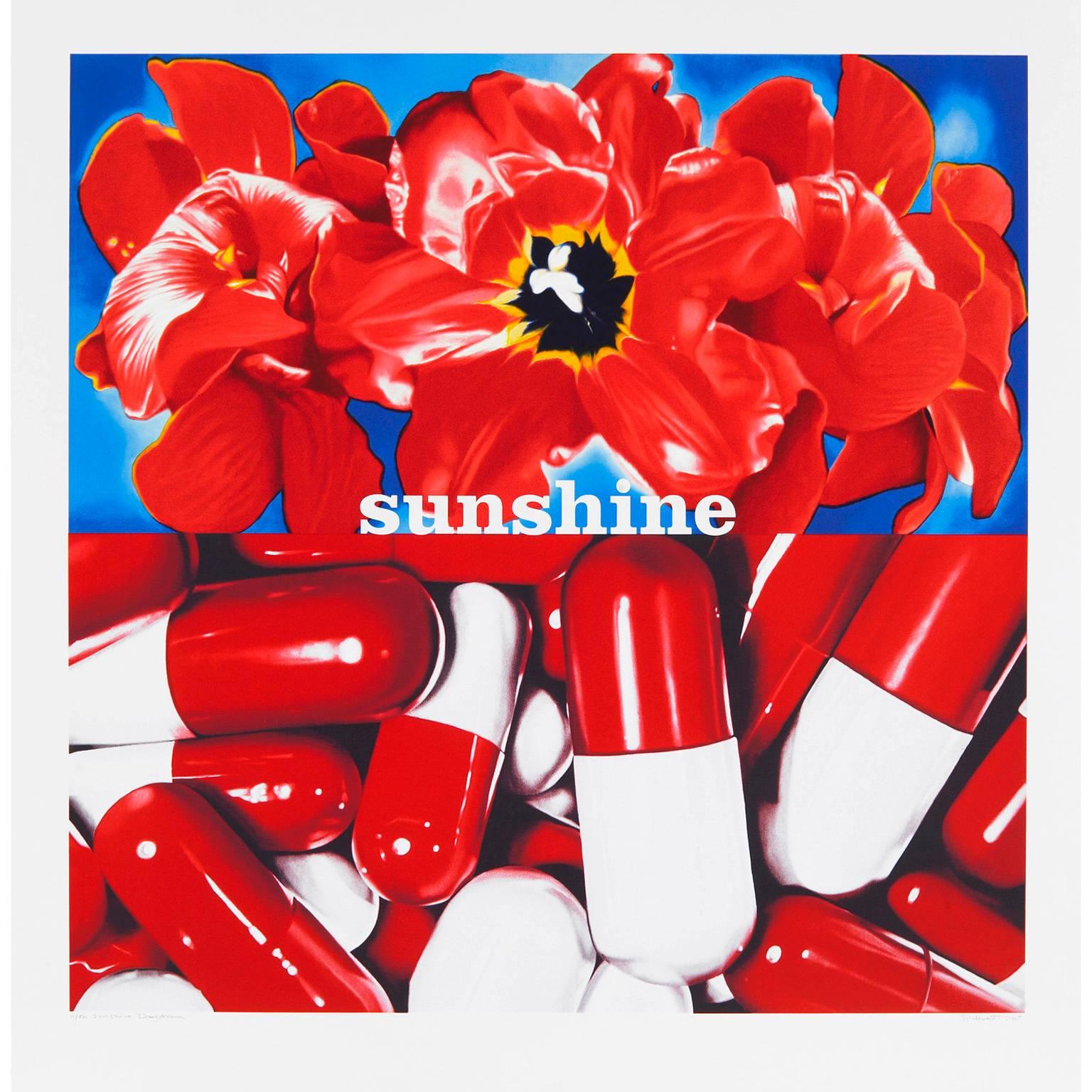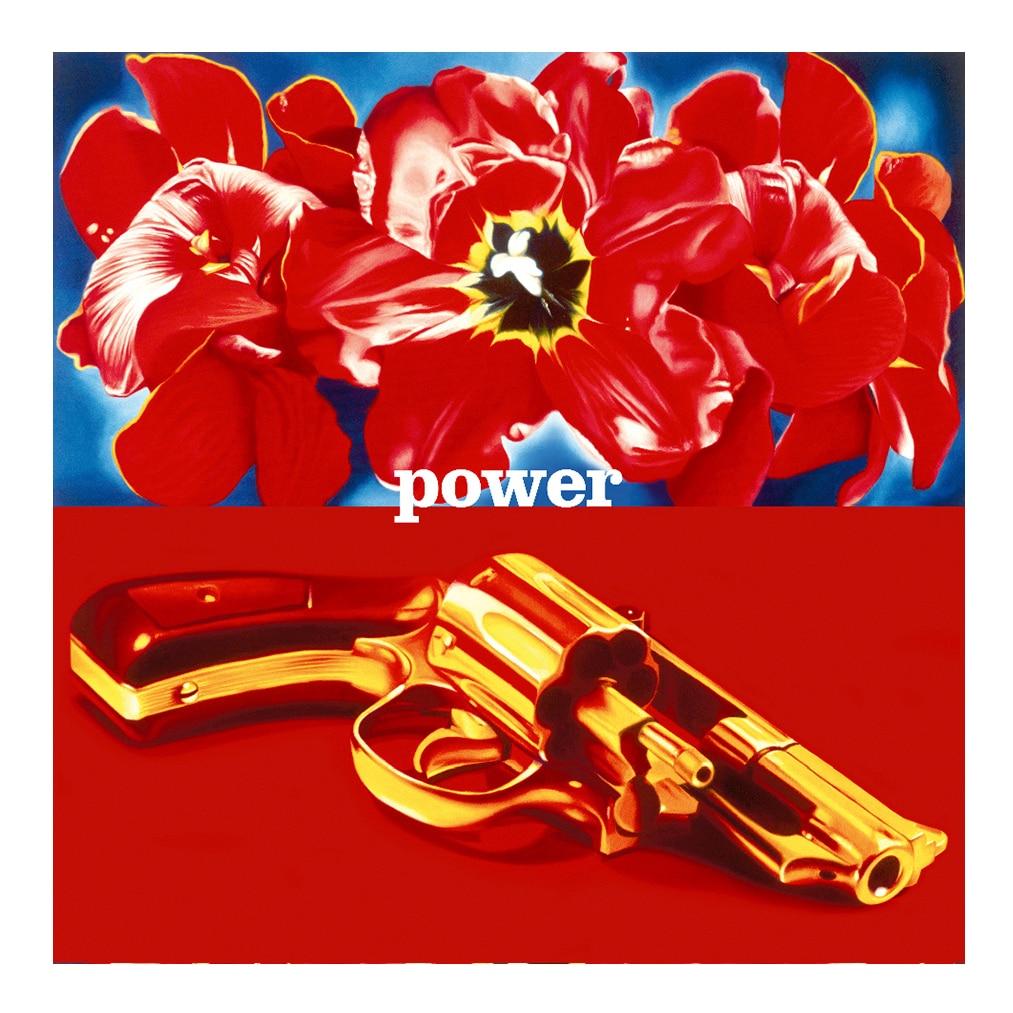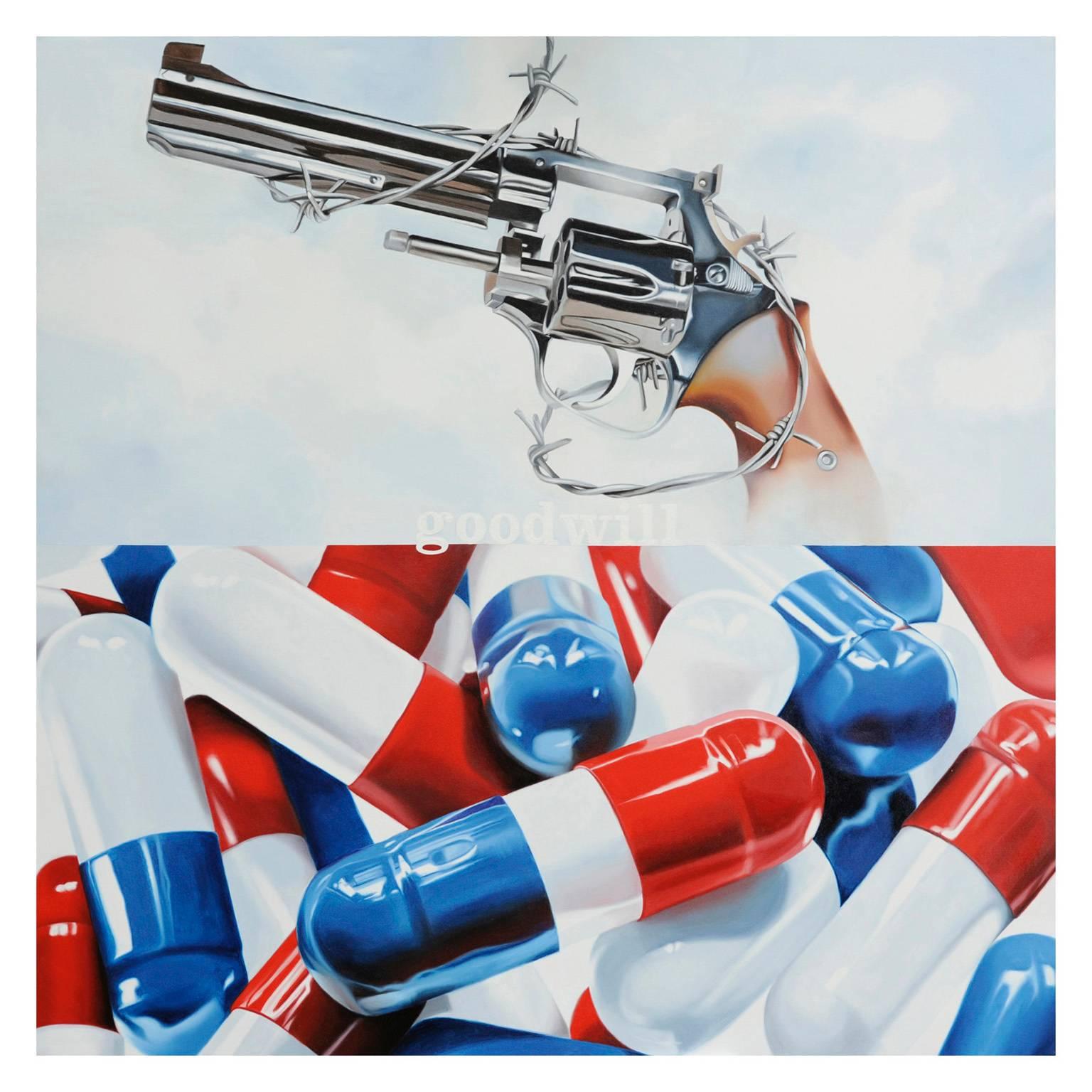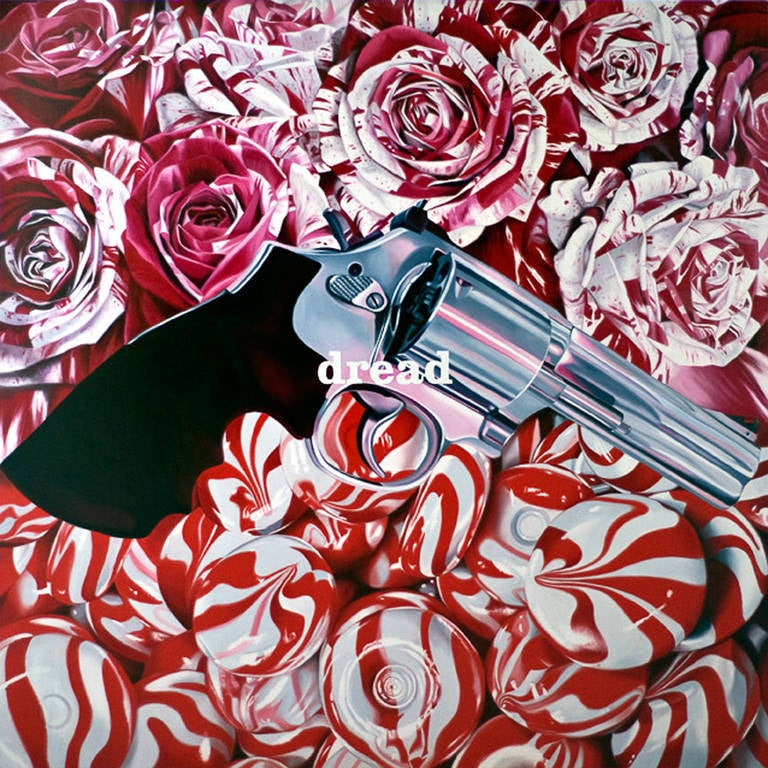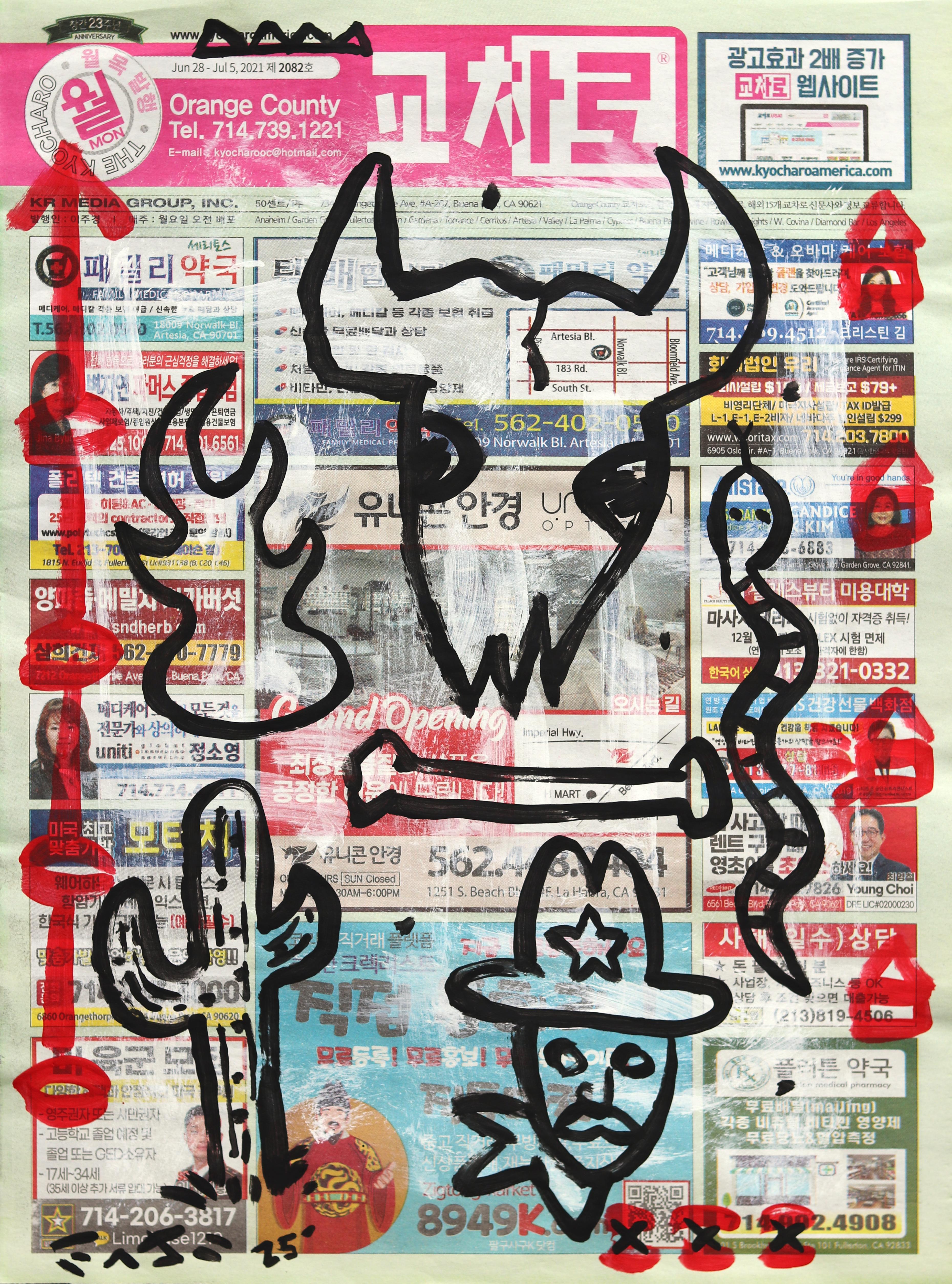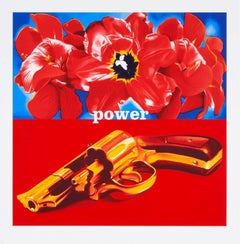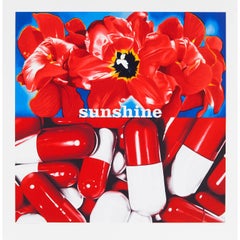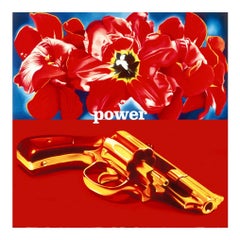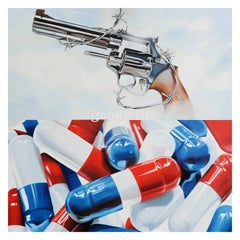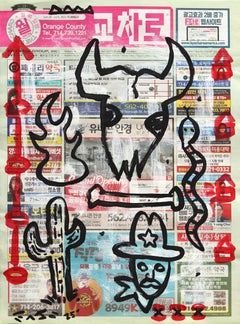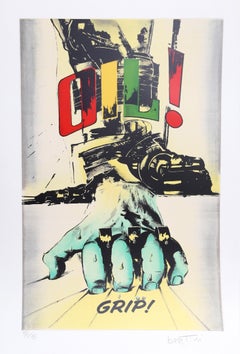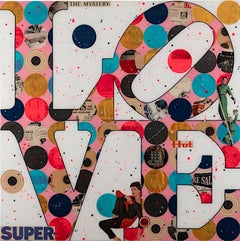Items Similar to The Heat Goes on
Want more images or videos?
Request additional images or videos from the seller
1 of 5
Philippe HuartThe Heat Goes on2007
2007
$1,119.98
£850.65
€950
CA$1,572.08
A$1,716.83
CHF 901.19
MX$20,591.84
NOK 11,350.03
SEK 10,662.04
DKK 7,235.70
About the Item
Publisher GKM.
Edition of 50 ex
Free shipment worldwide.
Signed, dated, titled and numbered.
Working on a variety of perceptual levels, Philippe Huart lets one visit his intimate diary entries or take a tour of his fantasies. His canvases suggest several different readings – aesthetic, message-laden, lyrical, or realistic in a fictional take on the everyday – so as to account for both the uniformity and the disorder of the visual information that is bombarding us. Whether he is depicting a gun, bonbons, flowers, or pharmaceutical tablets, Huart’s concern is not to reveal, through his iconography, what grounds the established metaphorical relations between objects, and that just makes them more fascinating. The painter favors reflective surfaces on which the surrounding spectacle, out of frame, comes to fit like a film on the screen. Starting with Pop Art-related imagery, he creates a universe populated with gleaming capsules, tired flowers, and tangy candy treats. His sumptuous sweets are piled up, packed in, juxtaposed, enlarged, and fragmented. From the initial photographic document he removes those anecdotal features that might risk diverting one’s attention from the main subject matter of the composition. It is the treatment of the image, with all the attendant ambiguities of representation, that interests him. His work clings to the high-definition zones of images. But his canvases have little to do with their appearance or the objects being represented. They constitute, instead, a set of motivations and propositions. Thus, beneath their tempting colors, these capsules the painter prescribe do not conceal their pernicious side-effects, which, on account of their attractiveness, might otherwise be forgotten. Dependence on these new Gidean “Fruits of the Earth” reveals the critical import of his work as well as its genuinely disturbing power. While the highly strict symmetry of his paintings – which divides the canvas in half lengthwise, thereby offering two realities that answer each other like a reflected image – affords one an idea of the sometimes extreme rigorousness of this approach, it no less remains the case that there is also room for humor, as the titles chosen for these pictures demonstrate. Through the reflections they give off (and as reinforced by the titles they are given, often in homage to 1970s Pop music), his works show display great complexity in his arrangement of graphic elements. It seems that the artist is less interested in a faithful reproduction of the image than in the optical illusion it represents. In this fake naturalism, the glossy perfection of what is being depicted borrows from the craftsmanship of this former advertising professional. His approach to the subjects of his paintings is conceptual, and he introduces words that put writing in a representational role as he combines text and images in a variety of ways that are always executed with a certain amount of finesse. He still loves the reflections of the outside world on the chrome-plated surfaces of revolvers, sugar-coated pills, or translucent candy wrappers… His taste for physical effects, his brush strokes, and his glazes are masterfully and knowingly expressed in a way that is reminiscent of the painters of Dutch still lifes. The miraculous meeting of panache and finish found in these harmonious volumes and colors gives his compositions a rhythmic perfection that is fascinatingly unique. The perfect finishing strokes on his works remove from them any purely philosophical, social, or protest message, though they also allow one to see through their insidious violence. Huart concentrates his efforts on a near-anaesthetizing, almost stupefying level of pictorial investigation where the meaning contained in the image spawns comparisons to conceptual artists. Paradoxically, his vibrantly polychromatic work reflects a quite somber, emotionally moving tonality that seems deeply marked by death. His painting is invigorated by intentions, or rather provocations, that do not represent, but instead create, another reality, one to which each viewer, depending on her experiences, emotions, and cultural background, can bring her own sensitive or cognitive response. Renaud Faroux, Paris
- Creator:Philippe Huart (1953, French)
- Creation Year:2007
- Dimensions:Height: 36.23 in (92 cm)Width: 35.44 in (90 cm)
- Medium:
- Movement & Style:
- Period:
- Condition:
- Gallery Location:Malmo, SE
- Reference Number:1stDibs: LU3284816211
About the Seller
5.0
Gold Seller
Premium sellers maintaining a 4.3+ rating and 24-hour response times
Established in 1967
1stDibs seller since 2013
238 sales on 1stDibs
Typical response time: <1 hour
- ShippingRetrieving quote...Shipping from: Malmo, Sweden
- Return Policy
Authenticity Guarantee
In the unlikely event there’s an issue with an item’s authenticity, contact us within 1 year for a full refund. DetailsMoney-Back Guarantee
If your item is not as described, is damaged in transit, or does not arrive, contact us within 7 days for a full refund. Details24-Hour Cancellation
You have a 24-hour grace period in which to reconsider your purchase, with no questions asked.Vetted Professional Sellers
Our world-class sellers must adhere to strict standards for service and quality, maintaining the integrity of our listings.Price-Match Guarantee
If you find that a seller listed the same item for a lower price elsewhere, we’ll match it.Trusted Global Delivery
Our best-in-class carrier network provides specialized shipping options worldwide, including custom delivery.More From This Seller
View AllFlower Power Pop
By Philippe Huart
Located in Malmo, SE
Publisher GKM.
Edition of 50 ex
Free shipment worldwide.
Signed, dated, titled and numbered.
Working on a variety of perceptual levels, Philippe Huart lets one visit his intimate d...
Category
Early 2000s Pop Art Figurative Prints
Materials
Screen
Sunshine Daydream.
By Philippe Huart
Located in Malmo, SE
Publisher GKM.
Edition of 50 ex
Free shipment worldwide.
Signed, dated, titled and numbered.
The work of Antonio de Felipe is a constant source of fascination and surprises. It is ...
Category
Early 2000s Pop Art Figurative Prints
Materials
Screen
Super Flower Power
By Philippe Huart
Located in Malmo, SE
Signed, titled and dated on the verso.
Acquired directly from the artist.
Painted on the sides.
No frame needed.
Free shipment worldwide.
Working on a variety of perceptual levels, ...
Category
Early 2000s Pop Art Figurative Paintings
Materials
Canvas, Oil
Farewell to Paradise
By Philippe Huart
Located in Malmo, SE
Signed, titled and dated on the verso.
Acquired directly from the artist.
Painted on the sides.
No frame needed.
Free shipment worldwide.
Working on a variety of perceptual levels, ...
Category
2010s Pop Art Figurative Paintings
Materials
Canvas, Oil
Daydream Nightmare
By Philippe Huart
Located in Malmo, SE
Signed, titled and dated on the verso.
Acquired directly from the artist.
Painted on the sides. No frame needed.
Free shipment worldwide.
Working on a variety of perceptual levels, ...
Category
2010s Pop Art Paintings
Materials
Oil
Atomic Jello
By Philippe Huart
Located in Malmo, SE
Exposed at: Musée d’art contemporain
Saint-Martin – Montélimar France 28 June – 26 October 2014
Signed, titled and dated on the verso.
Acquired directly from the artist.
Painted on t...
Category
Early 2000s Pop Art Figurative Paintings
Materials
Canvas, Oil
You May Also Like
Heat Wave Duel - Abstract Figurative South Western Inspired Pop Art by Gary John
By Gary John
Located in Los Angeles, CA
Los Angeles street artist Gary John exploded onto the international art scene first during Art Basel Miami in 2013. John’s playfully bold work quickly gained attention and he was nam...
Category
21st Century and Contemporary Pop Art Abstract Paintings
Materials
Paper, Mixed Media, Acrylic, Newsprint
Reut Harel: WOW - Giclee print on canvas. 19.7/27.5”
Located in Tel Aviv, IL
Reut Harel is a Pop Art artist who works in Tel Aviv and creates colorful, optimistic, vibrant art that combines detailed elements and emotions. Her works a...
Category
2010s Pop Art Figurative Paintings
Materials
Giclée
Grip, Pop Art Screenprint by Gianni Bertini
Located in Long Island City, NY
Artist: Gianni Bertini, Italian (1922 - 2010)
Title: Grip
Year: 2002
Medium: Screenprint, signed and numbered in pencil
Edition: XIV/XX
Paper Size: 43.5...
Category
Early 2000s Pop Art Figurative Prints
Materials
Screen
Super Hot
By John Joseph Hanright
Located in New York, NY
Pop Art. Americana + LOVE. Ephemera, Oil, Acrylic, Resin on Panel.
About the Artist:
John Joseph Hanright is a contemporary painter and assemblage artist who brings together a c...
Category
2010s Pop Art Figurative Paintings
Materials
Resin, Oil, Acrylic, Wood Panel
Untitled VI, Geometric Pop Art Screenprint by Nicholas Krushenick
By Nicholas Krushenick
Located in Long Island City, NY
Artist: Nicholas Krushenick, American (1929 - 1999)
Title: Untitled VI from Fire-Flash-Fire-Fade Portfolio
Year: 1971
Medium: Screenprint, signed and numbered in pencil
Edition: 150
...
Category
1970s Pop Art Abstract Prints
Materials
Screen
Beauty Rages, Pop Art Giclee Print by Michael Knigin
By Michael Knigin
Located in Long Island City, NY
Michael Knigin, American (1942 - 2011) - Beauty Rages, Portfolio: Vintage Nudes, Year: 2001, Medium: Giclee signed, numbered, dated, and titled in pencil, Edition: AP, Image Size...
Category
Early 2000s Pop Art Figurative Prints
Materials
Giclée
